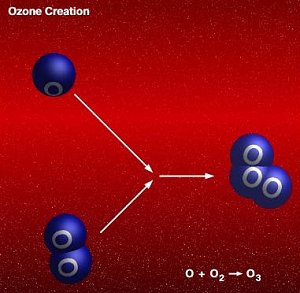
Scientists have discovered that when electric vehicles charging are done during the night ozone can be reduced.
Ozone forms in the air as hydrocarbon and nitrogen oxides and react to sunlight being produced mainly by automobiles and electricity generating units. US failed to meet the National Ambient Air Quality Standards even after 30 years of regulation.
According to the Institute of Physics, the popularity of Plug-in Hybrid Electric Vehicles have risen in over the past decade because of cheaper fuel costs, better efficiency, and positive influence on the environment thanks to fewer exhaust fumes. Plug-in Hybrid Electric Vehicles have the possibility to run off battery, power and gasoline.
Charging Plug-in Hybrid Electric Vehicles at night is more cost-effective and reliable as well known. The scientist already published in Environmental Research Letters their work about the fact that night-time charging for electric vehicles gives a lower level of pollution. They did measurement an average across four cities. When Plug-in Hybrid Electric Vehicles run off battery power they release no pollutants from their exhaust, however, the electricity generating units, which provide electricity to charge batteries, do give off pollutants.
Based on the idea, scientists at the University of Texas and at the Massachusetts Institute of Technology tried to model the outcome of replacing 20% of the vehicle miles travelled by gasoline with Plug-in Hybrid Electric Vehicles, in the state of Texas using three different electric car charging situations to study the discharge of pollutants, specifically ozone. First set-up in study was based on charging electric vehicles at off-peak times in the night; second set-up involved charging to maximize battery life and third set-up involved charging the battery when is a convenient time for the driver.
Overall levels of pollution, resulting from electricity generating unit discharges associated with charging, were lower than the level of pollution resulting from the emissions associated with 20% of gasoline vehicle miles travelled according with the outcomes of the study. Night-time charging was shown the highest amount of nitrogen oxides; this led to the least amount of ozone on average across all cities and hours modelled as there is no sunlight for the emissions to react with. The pollutants are spread out and diluted by other methods such as the wind when the morning comes.
The lead author of this study, Dr. Tammy Thompson of Massachusetts Institute of Technology said: “The results in general show positive air quality results due to the use of Plug-in Hybrid Electric Vehicles regardless of charging scenario with the night-time charging scenario showing the best results on average by a small margin.”
“This further supports efforts to develop regulation to encourage night-time charging; an example would be variable electricity pricing. As more of the fleet switches over to Plug-in Hybrid Electric Vehicles and a larger demand is placed on the electricity grid, it will become more important that we design and implement policy that will encourage charging behaviours that are positive for both air quality and grid reliability.”



